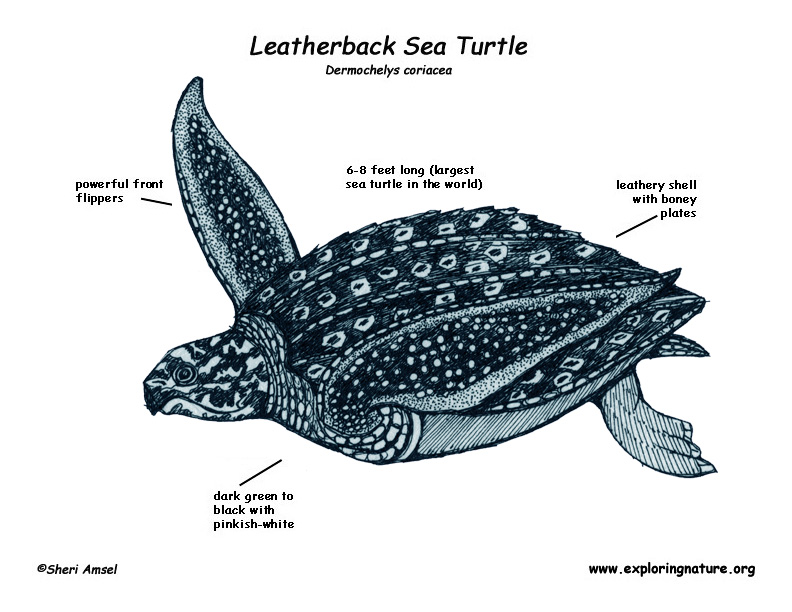

They are found in oceans all over the world traveling further north, as far as Alaska, and further south, to the southern tip of Africa than any other sea turtle.
They are usually found in the open ocean, but often feed just offshore of land.
They are the largest sea turtles in the world, reaching 6 - 8 feet long and weighing 1,200 - 1,500 pounds with big, powerful front flippers. They are dark green to black with pinkish-white spots and have a leathery shell (carapace) made strong by tiny, boney plates. They are different from other cold-blooded reptiles because they can keep their body temperature warm enough to go to colder places to feed, like Greenland and Iceland where the water is just a few degrees over freezing. They can live in colder places (environments) than any other reptile on earth.
They sometimes eat plastic bags floating in the ocean, because they look like jellyfish. This causes a lot of leatherback deaths.
They eat only jellyfish.
They have no predators but are threatened by ocean pollution and are sometimes killed in fishing nets.
Every 2-3 years from late winter to early summer, females will come up on the beaches of the southeastern U.S. south to the Virgin Islands and lay about 80 eggs. They will do this between 6 - 9 times (every 10 days). The eggs hatch after about 2 months.
Kingdom: Animalia
Phylum: Chordata
Subphylum: Vertebrata
Class: Reptilia
Order: Testudines
Family: Dermochelyidae
Genus: Dermochelys
Species: D. coriacea
When you research information you must cite the reference. Citing for websites is different from citing from books, magazines and periodicals. The style of citing shown here is from the MLA Style Citations (Modern Language Association).
When citing a WEBSITE the general format is as follows.
Author Last Name, First Name(s). "Title: Subtitle of Part of Web Page, if appropriate." Title: Subtitle: Section of Page if appropriate. Sponsoring/Publishing Agency, If Given. Additional significant descriptive information. Date of Electronic Publication or other Date, such as Last Updated. Day Month Year of access < URL >.
Amsel, Sheri. "Sea Turtle (Leatherback)" Exploring Nature Educational Resource ©2005-2024. December 13, 2024
< http://www.exploringnature.org/db/view/Sea-Turtle-Leatherback >

